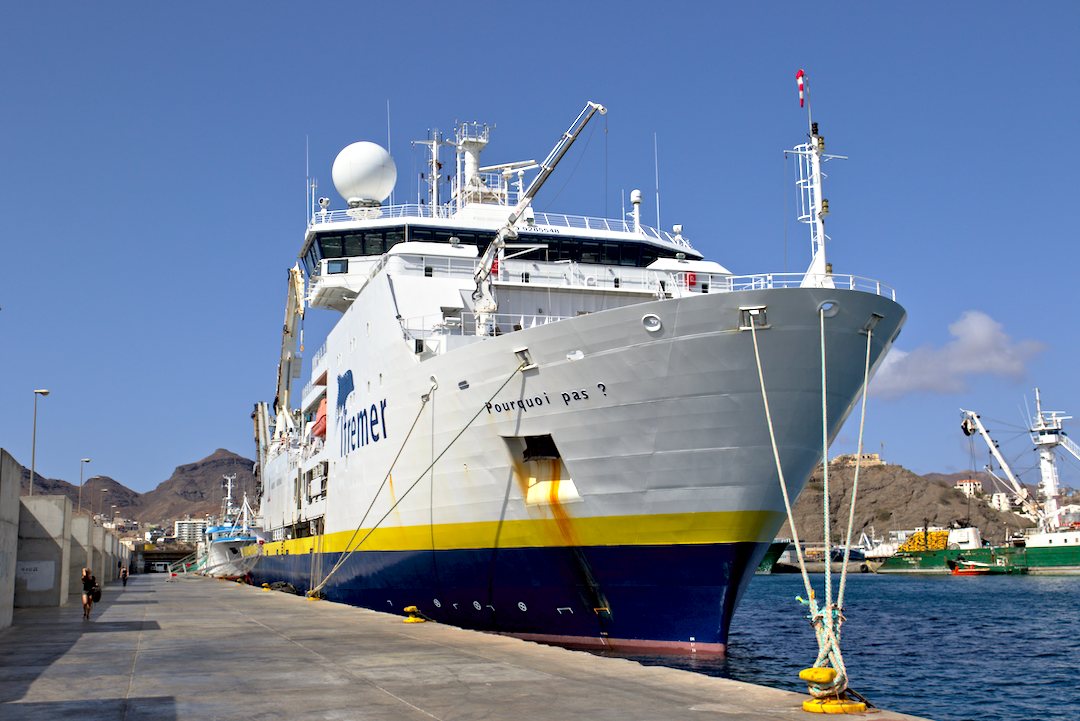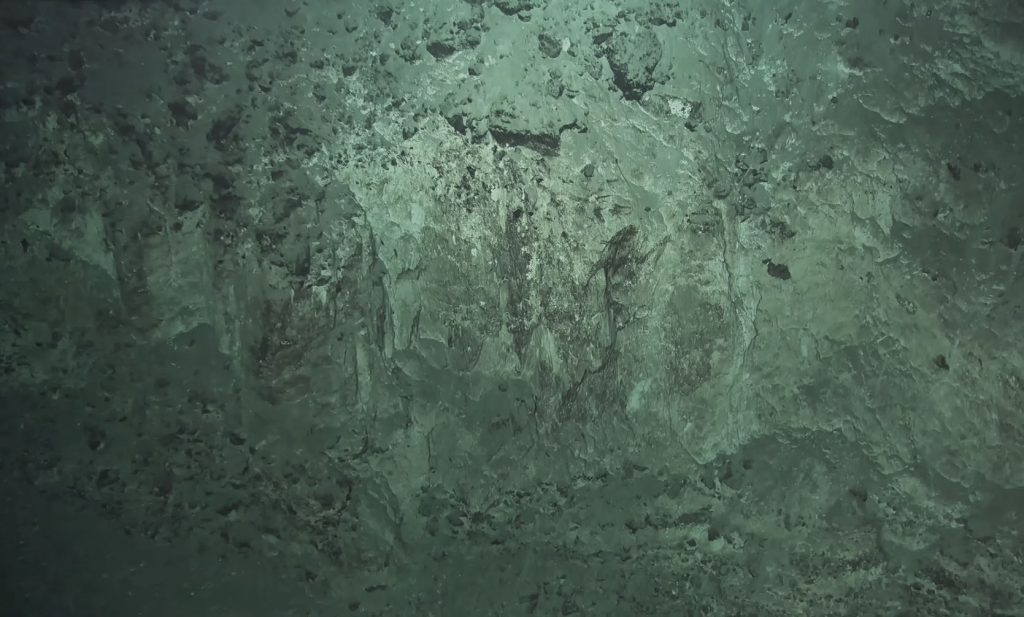The 5th Nautile dive of the SMARTIES cruise occurred July 25th. The dive follows the northern section of the transform fault, on the same side as the 2nd and 4th dives exploring a section of the ~50 Ma years old oceanic crust. The dive was in continuity and shallower than Dive 4 and deeper than Dive 2. The immersion started at 9h00 local time, touching the seafloor at 11H30 at a depth of 4930 m. The objective of the dive was to complete the geological section along the steepest part of the transform fault to characterize the lithology in correspondence of the ILAB N-S seismic line. We also aimed at reporting structural features, and any evidence of hydrothermal activity affecting the oceanic crust.

Azam in the Nautile. P. X. Placaud © Ifremer 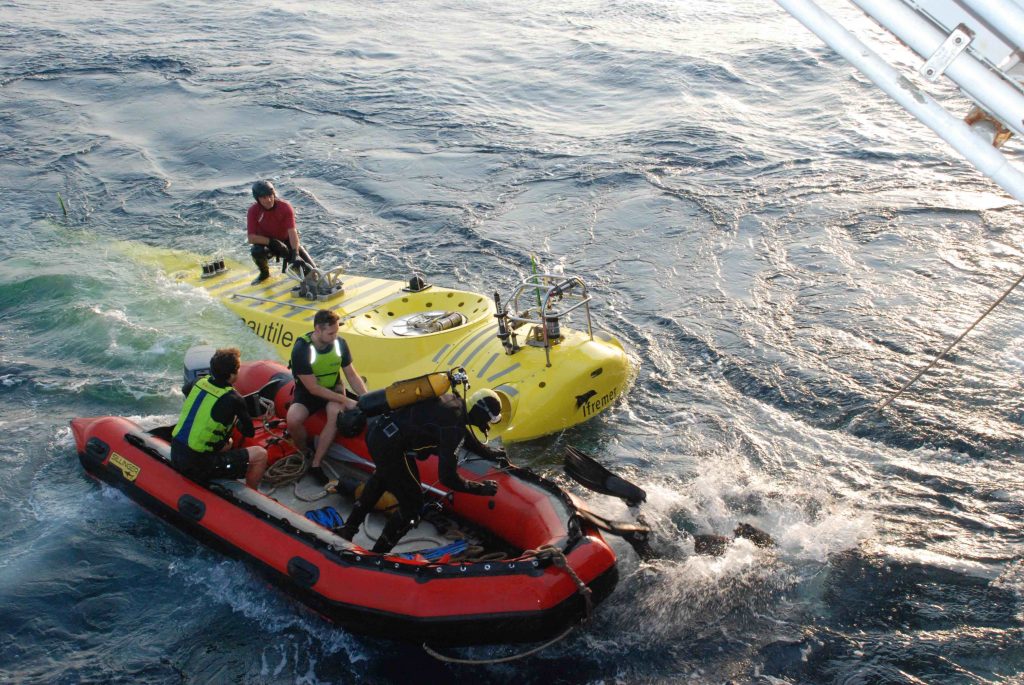
The Nautile in the water. P. F. Lombardi. © Ifremer 
Map of the dive. © SMARTIES cruise
The dive started along a smooth slope, in an area mainly covered by sediment with a single large basaltic block (5×1m). A few meter higher along the profile, the slope dramatically changes into a steep rocky scarp covered by angular basaltic rocks sliding down from the upper slope. The first in-situ magmatic outcrop was observed at a depth 4817 meters. I followed it along the profile for about 150 meters observing a relatively homogeneous outcrop consisting of brecciated basalt. In the following part of the sequence I observed some magmatic structures as massive or, rarely, pillow lavas that can be interpreted as in-situ outcrops. These relatively small outcrops appear several times along the section. They are intercalated by large blocks of brecciated and basalts representing the main part of the sequence. The blocks appear as flat slices (10 m length× ~1.5 m thick) vertically oriented, separated by newly formed ca. 50 cm-thick open fissures. The blocks are extremely unstable due to extreme topographic slope (60° – 80°). There are no clear structure features on the block surface, except a few centimetre-thick cracks randomly oriented. Thin whitish vertical marks can be observed on the blocks surfaces, possibly due to recent scratching by sliding blocks. Sub-horizontal marks are also present locally on the blocks surfaces, possibly representing traces of movement parallel to the transform fault. These blocks are strongly lithified, which makes it easy to distinguish them from the massif lavas during rock sampling. A thin manganese coating covers the rock surfaces attesting for a recent exposition on the seafloor. The magmatic sequence is affected by hydrothermal activity clearly visible as greenish anastomosed epidote mineralization (cm thick veins forming up to meter-sized patches).
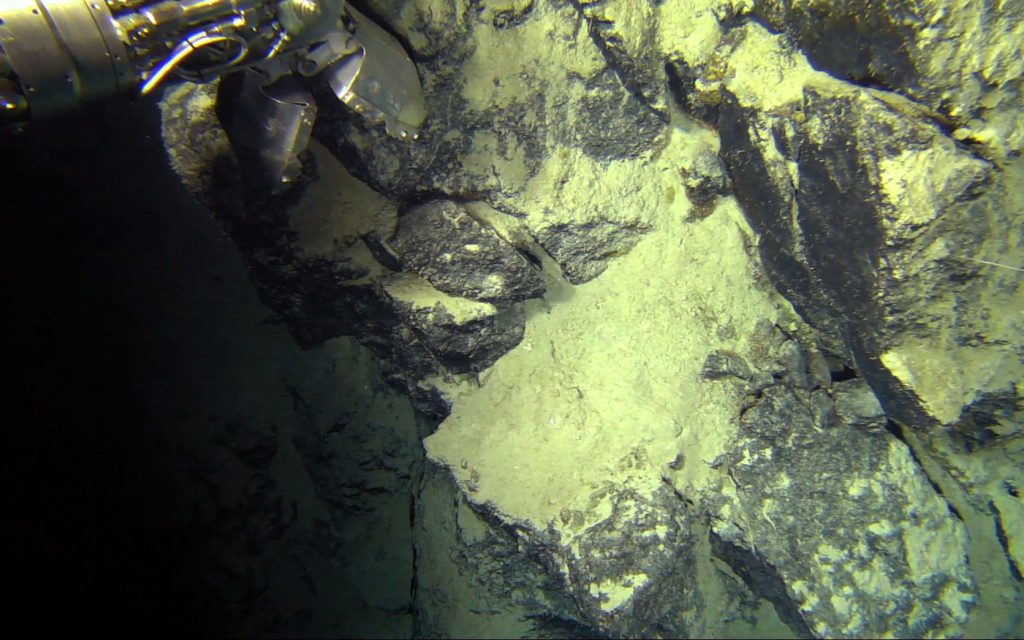
In situ magmatic outcrop. © SMARTIES cruise 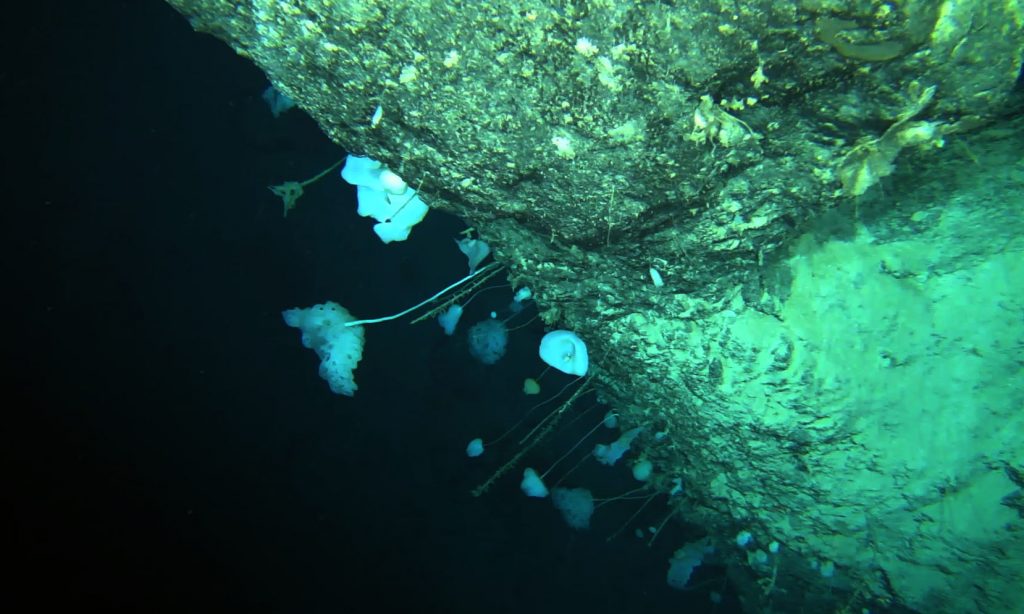
Outcrop of brecciated basalts. © SMARTIES cruise 
Vertically oriented blocks. © SMARTIES cruise
At a depth of 3729 metres a relatively thick sedimentary structure appear. This lithology is clearly distinguished from the magmatic sequence. It shows a clear horizontal layering at the top of the magmatic sequence. Small (<50 cm radial) basaltic fragments with the same orientation of sediment stratification are visible at the top and the bottom of the sedimentary layers. In the middle of the sedimentary sequence there is a relatively thick (~7 meters) layer of weakly consolidated sediments where basaltic fragments are absolutely absent. Finally, we left the seafloor at 16h14 at 3682 meters depth. A total of fourteen samples were collected; thirteen samples made of basalt and one sample from the sedimentary sequence including basaltic fragments.
By A. Soltanmohammadi
